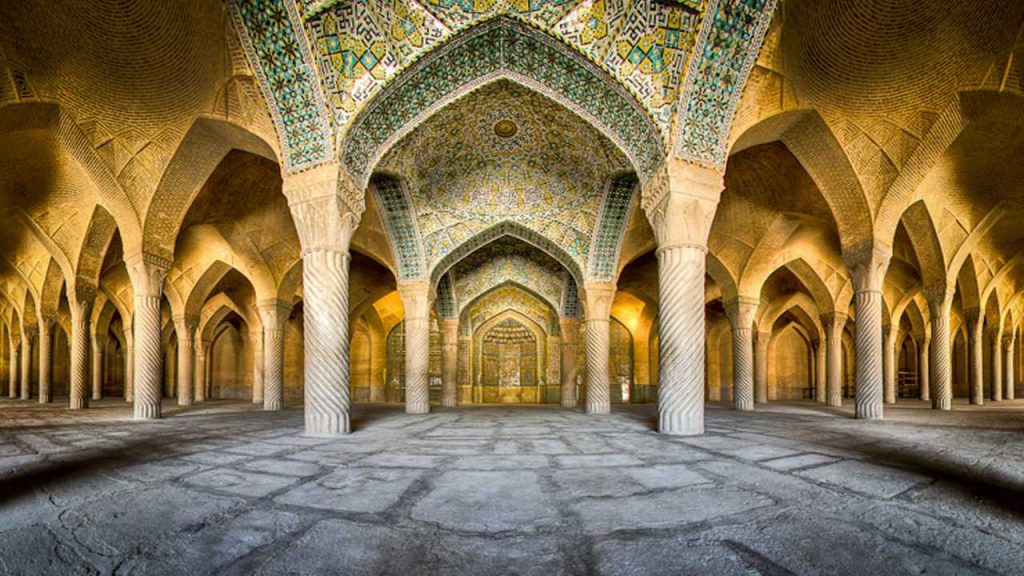 Zand Complex: It includes Citadel,Bath,Mosque and traditional Bazaar,which is located in the center of Shiraz in Zand street among the oldest streets of Shiraz and near the most and best hotels of this city.
Zand Complex: It includes Citadel,Bath,Mosque and traditional Bazaar,which is located in the center of Shiraz in Zand street among the oldest streets of Shiraz and near the most and best hotels of this city.
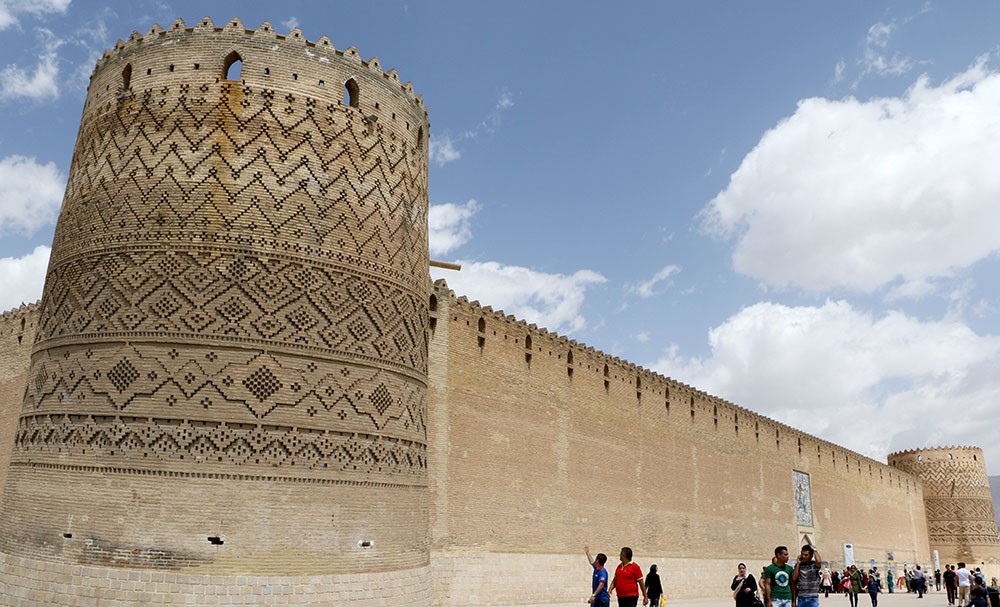
The Arg of Karim Khan or Karim Khani Citadel: that resembles a medieval fortress from outside view and has a traditional Iranian building and a yard in interior part. This building is built in Zandiyeh Dynasty by Karim Khan who was a sincere king and is famous for his loyalty to the people and in one of rooms you will face with some statues of the king and other people that is like they retell you the story of their lives.
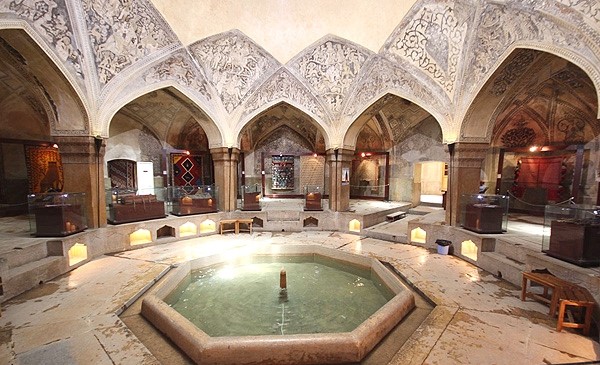
Bath of Karim khan: It is a traditional Iranian bath that has turned into museum. In this museum which is full of statues, you will get acquainted with Iranian culture and traditional lifestyle of Iranians.

Vakil Mosque: There are places of worship with extraordinarily beautiful in design and forms that show the art of Iranian. The iwans and court are decorated with typical Shirazi haft rangi (with seven colors) tiles and you can take beautiful photos in this place and enjoy your time.

Traditional Vakil Bazaar: In the past this bazaar was main store center of Shiraz and today it has become preferable place for the youths to go shopping or have gatherings because it has still kept its traditional and old environment. This bazaar has old shops to buy all kinds of Persian rugs, spices, copper handicrafts and antiques.
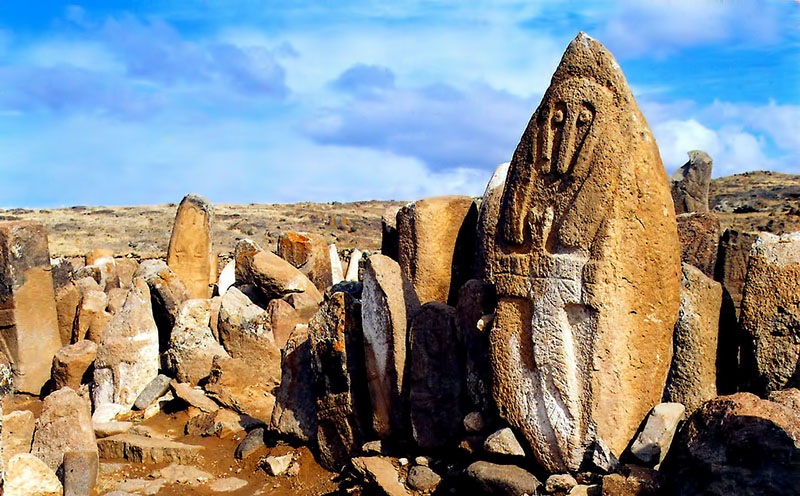 Shahreyeri (Shahr-e Yeri) is an ancient site located 65 kilometers outside of the city of Ardabil and 31 kilometers from the city of Meshgin Shahr near Pirazmeyan Village. The area, which spans 400 hectares, consists of a military fortress, a temple and Qousha or Ghousha Tepe.
Shahreyeri (Shahr-e Yeri) is an ancient site located 65 kilometers outside of the city of Ardabil and 31 kilometers from the city of Meshgin Shahr near Pirazmeyan Village. The area, which spans 400 hectares, consists of a military fortress, a temple and Qousha or Ghousha Tepe. Shahreyeri has also yielded artifacts from the Iron Age as well as grey, orange and cream-colored pottery. Some of the items found in excavations of this ancient site are currently housed in the Archeology Museum of Khalkhal. Shahreyeri was registered as a National Heritage Site in 2002.
Shahreyeri has also yielded artifacts from the Iron Age as well as grey, orange and cream-colored pottery. Some of the items found in excavations of this ancient site are currently housed in the Archeology Museum of Khalkhal. Shahreyeri was registered as a National Heritage Site in 2002.


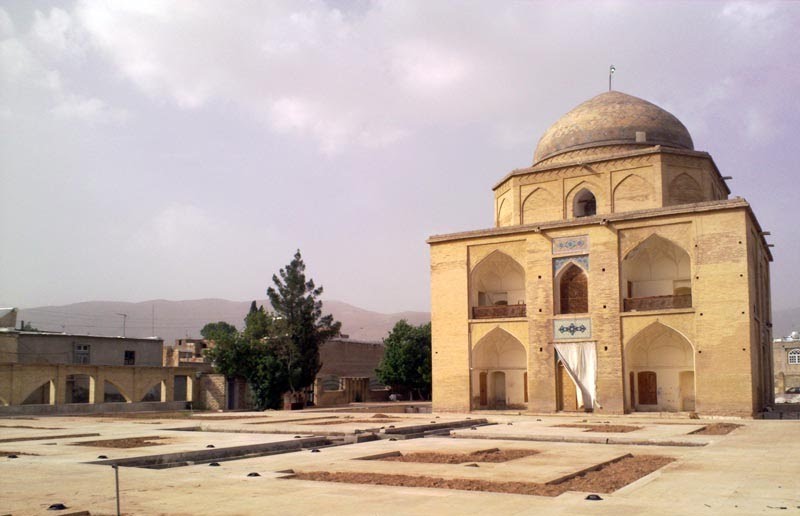
 Torghabeh is a city in and the capital of Torghabeh and Shandiz County, in Razavi Khorasan Province, Iran. Torghabeh is famous because of its mild nights in summer.Torghabeh is considered by many Mashhad locals as their favorite getaway from the city. A pristine river flows through the city many gardens and orchards.
Torghabeh is a city in and the capital of Torghabeh and Shandiz County, in Razavi Khorasan Province, Iran. Torghabeh is famous because of its mild nights in summer.Torghabeh is considered by many Mashhad locals as their favorite getaway from the city. A pristine river flows through the city many gardens and orchards. As it becomes more popular as a tourist destination in recent years, nightlife is thriving as well.The city is now one of the beautiful cities in Khorasan Razavi province, as the natural ones have been among the old Valley Tous lush Binaloud Mountains. The city has numerous tourist and important tourist centers on the side of Shandiz.
As it becomes more popular as a tourist destination in recent years, nightlife is thriving as well.The city is now one of the beautiful cities in Khorasan Razavi province, as the natural ones have been among the old Valley Tous lush Binaloud Mountains. The city has numerous tourist and important tourist centers on the side of Shandiz. It has many traditional restaurants and many local businesses that sell handicrafts. One of its customary local foods is Dizi. Another common choice of food among the frequent visitors of the town is Shishlik, which is basically grilled lamb and T-bone accompanied by rice.
It has many traditional restaurants and many local businesses that sell handicrafts. One of its customary local foods is Dizi. Another common choice of food among the frequent visitors of the town is Shishlik, which is basically grilled lamb and T-bone accompanied by rice.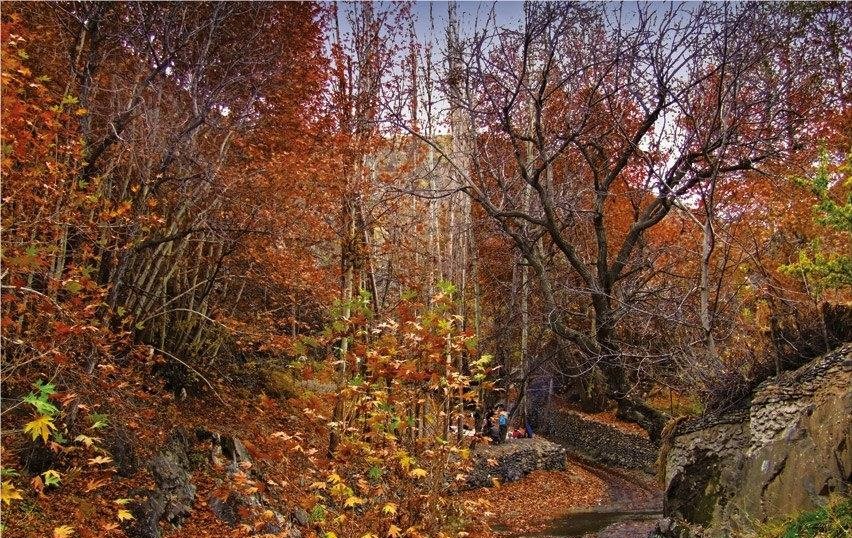
 Martian Mountains, (Merrikhi Mountains), Situated 40 to 50 km from Chabahar, Sistan and Baluchestan Iran.This mounts have been stretched out parallel to the Oman Sea. These Miniature Mounts are extremely beautiful and are considered as the symbols of the unique geo-morphological phenomena of this region of the country.
Martian Mountains, (Merrikhi Mountains), Situated 40 to 50 km from Chabahar, Sistan and Baluchestan Iran.This mounts have been stretched out parallel to the Oman Sea. These Miniature Mounts are extremely beautiful and are considered as the symbols of the unique geo-morphological phenomena of this region of the country.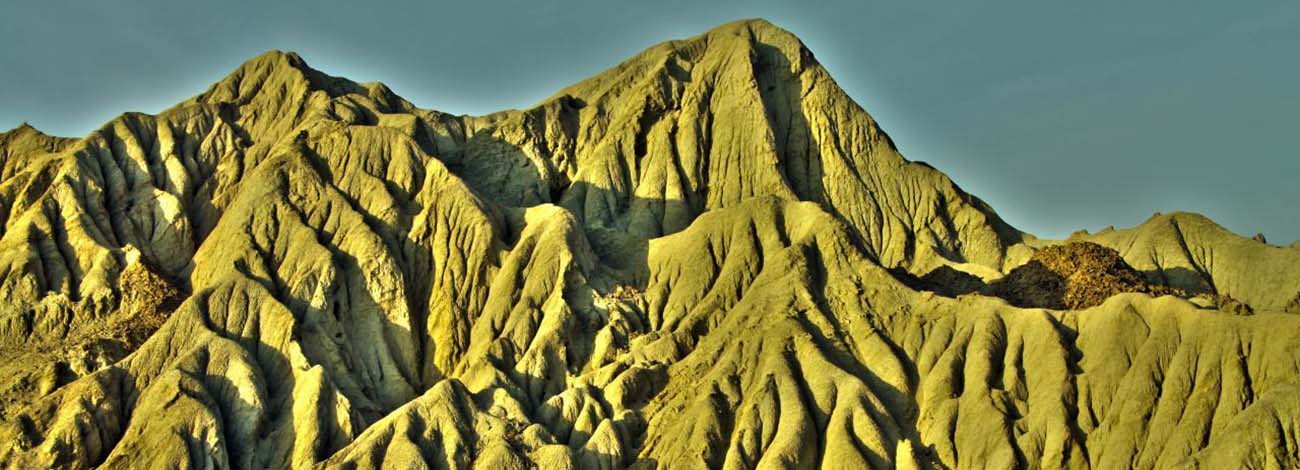 In the past, Martian Mountains were buried under piles of soil and became visible after a long passage of time. The geometric patterns of the mountains have been created by rapid soil erosion caused by wind and rain, as if a skilled painter has carved them.The mountains vary from 5 meters to 100 meters Ones and have unusual white and gray colors creating beautiful scenes at night. The phenomenon, however, prevents the growth of plants in the region.
In the past, Martian Mountains were buried under piles of soil and became visible after a long passage of time. The geometric patterns of the mountains have been created by rapid soil erosion caused by wind and rain, as if a skilled painter has carved them.The mountains vary from 5 meters to 100 meters Ones and have unusual white and gray colors creating beautiful scenes at night. The phenomenon, however, prevents the growth of plants in the region.
 The Makki Mosque or Grand Makki Mosque in Zahedan was established in 1971 and is located in the center of Zahedan, the capital of the province Sistan-Baluchistan in southeast Iran.The founder of the mosque was Maulana Abd al-Aziz Mullahzada who until his dead in 1987 the most important Sunni religious authority of the Baluch in Sistan-Baluchistan in Iran.
The Makki Mosque or Grand Makki Mosque in Zahedan was established in 1971 and is located in the center of Zahedan, the capital of the province Sistan-Baluchistan in southeast Iran.The founder of the mosque was Maulana Abd al-Aziz Mullahzada who until his dead in 1987 the most important Sunni religious authority of the Baluch in Sistan-Baluchistan in Iran. The Makki Mosque was founded as part of the Jamiat Darul Uloom seminary which is located next to the Makki mosque. The Darul Uloom is part of the Deobandi School.
The Makki Mosque was founded as part of the Jamiat Darul Uloom seminary which is located next to the Makki mosque. The Darul Uloom is part of the Deobandi School.
 Shushtar Historical Hydraulic System is an island city from Darius the Great period in the 5th century B.C with a complex irrigation system, Located in Iran's Khuzestan Province. The Complex was later renovated in Qajar period.
Shushtar Historical Hydraulic System is an island city from Darius the Great period in the 5th century B.C with a complex irrigation system, Located in Iran's Khuzestan Province. The Complex was later renovated in Qajar period.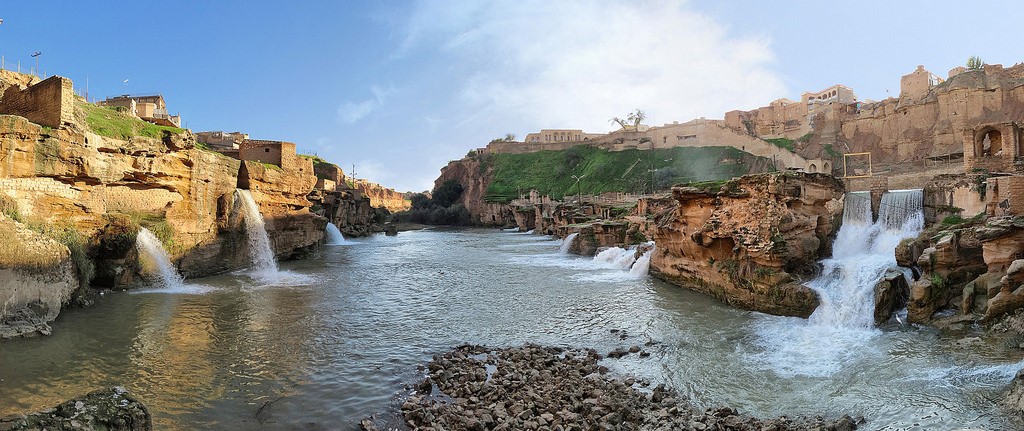 The waterfalls and the mills in Shushtar are good examples of ancient engineering. This complex is located in the “Gar Gar” river. It involved the creation of two main diversion canals on the river Karun one of which, Gar Gar canal, is still in use providing water to the city of Shushtar via a series of tunnels that supply water to mills.
The waterfalls and the mills in Shushtar are good examples of ancient engineering. This complex is located in the “Gar Gar” river. It involved the creation of two main diversion canals on the river Karun one of which, Gar Gar canal, is still in use providing water to the city of Shushtar via a series of tunnels that supply water to mills. The complex was used to use the water more efficiently in the past, and consists of waterfalls, mills, huge water canals, and is a good place for tourists.
The complex was used to use the water more efficiently in the past, and consists of waterfalls, mills, huge water canals, and is a good place for tourists. 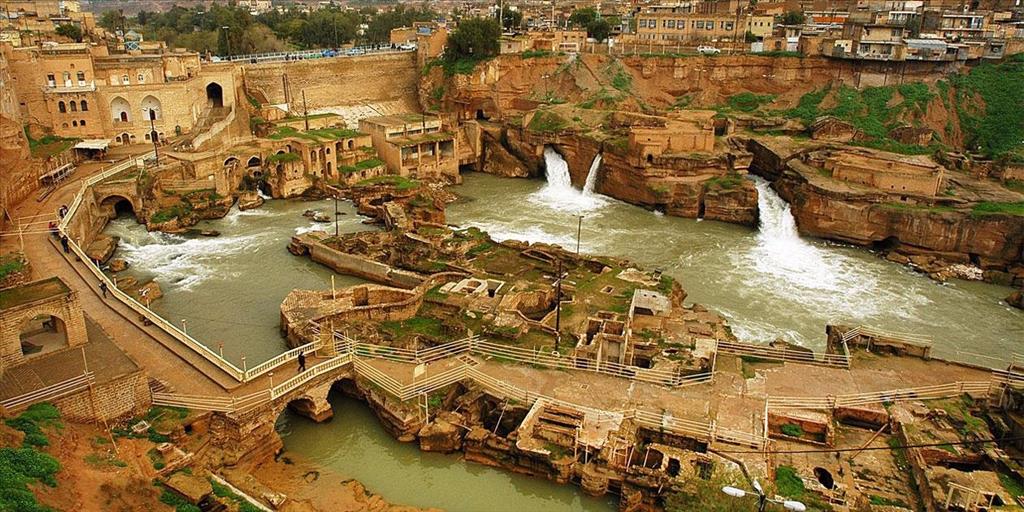
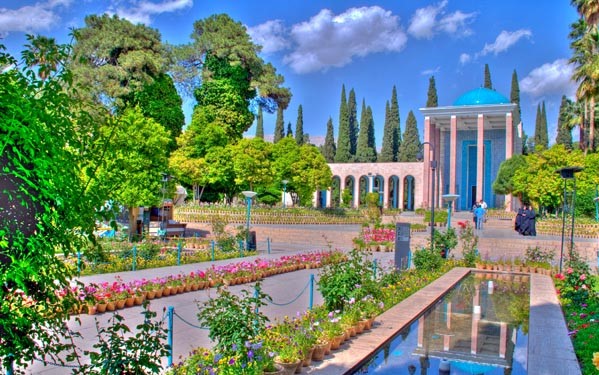 The mausoleum of Saadi, known also as the tomb of Sa’dy or Sadiyeh, is one of the major tourist attractions of Shiraz. Huge number of Iranians and non-Iranians pay a visit to this burial place and show their respect to Saadi and interest in his works, prose and poems.
The mausoleum of Saadi, known also as the tomb of Sa’dy or Sadiyeh, is one of the major tourist attractions of Shiraz. Huge number of Iranians and non-Iranians pay a visit to this burial place and show their respect to Saadi and interest in his works, prose and poems.  This Iranian poet is a globally known scholar whose words have touched many hearts across the world and wakened up many minds to take new steps in their lives to reach higher levels of humanity. The ambiance of this location is much more attractive than its architecture although it has got interesting character by itself.
This Iranian poet is a globally known scholar whose words have touched many hearts across the world and wakened up many minds to take new steps in their lives to reach higher levels of humanity. The ambiance of this location is much more attractive than its architecture although it has got interesting character by itself. Saadi was buried in a village outside Shiraz which is now part of the city although it’s at the outskirt in a relatively poor neighborhood. Under Karimkhan-e Zand, the 18th century ruler of Shiraz, the present Saadi’s mausoleum was built to further honor him. It’s in form of a multi-sided building with a cupola on top. From outside it may look like a square structure due to its flat facade decorated with Shirazi tiles depicting tree of life in various colors. Inside, you can see the 8 corners of the building and large lamp hanging from the ceiling. His grave is beautifully carved in Persian.
Saadi was buried in a village outside Shiraz which is now part of the city although it’s at the outskirt in a relatively poor neighborhood. Under Karimkhan-e Zand, the 18th century ruler of Shiraz, the present Saadi’s mausoleum was built to further honor him. It’s in form of a multi-sided building with a cupola on top. From outside it may look like a square structure due to its flat facade decorated with Shirazi tiles depicting tree of life in various colors. Inside, you can see the 8 corners of the building and large lamp hanging from the ceiling. His grave is beautifully carved in Persian.
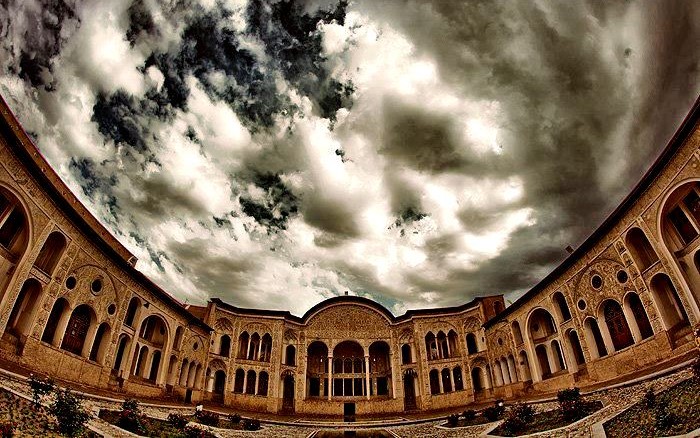 Tabatabaei House is one of the most beautiful traditional houses of Kashan that was built By Mr.Tabatabaei who was famous carpet businessman of this city about 200 years ago.Beautiful building with Iranian architecture and magnificent ornaments that fascinate you for hours.
Tabatabaei House is one of the most beautiful traditional houses of Kashan that was built By Mr.Tabatabaei who was famous carpet businessman of this city about 200 years ago.Beautiful building with Iranian architecture and magnificent ornaments that fascinate you for hours.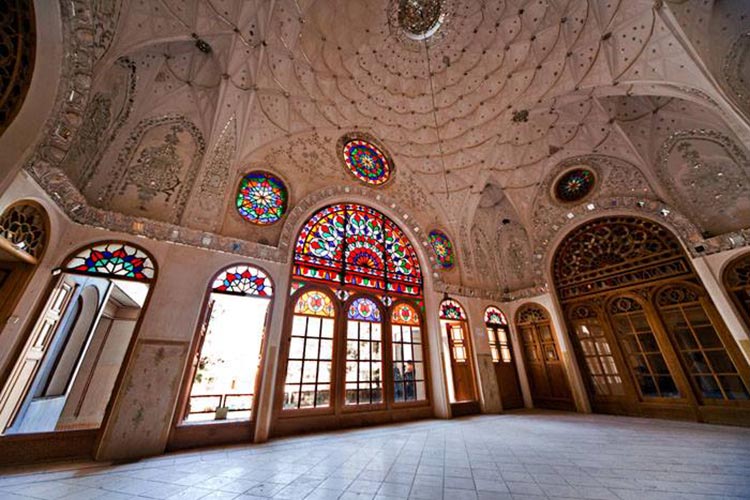 This home consists of 3 parts of inside and outside, and a special place for crew with 40 rooms,4 yards and basements,3 Badgir(windcather) and 2 Qanats that all of them according to climatic conditions of this region.
This home consists of 3 parts of inside and outside, and a special place for crew with 40 rooms,4 yards and basements,3 Badgir(windcather) and 2 Qanats that all of them according to climatic conditions of this region.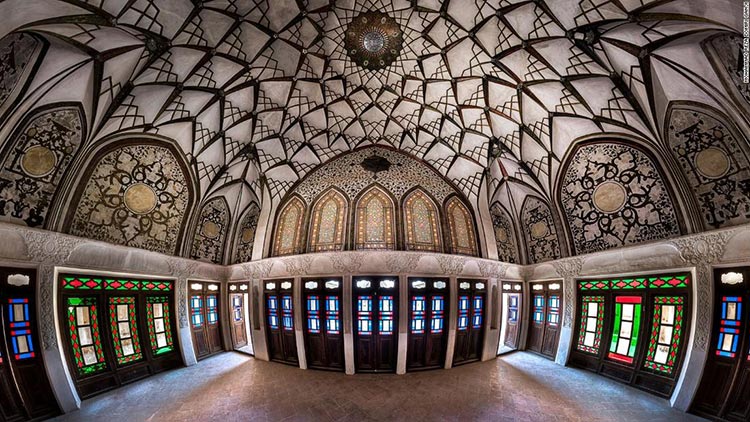 In the structure of Iranian Traditional houses you will encounter with interesting details like the interior and exterior of homes, which is perhaps indicate the two and different aspect of Persian moral characters in and out of home.
In the structure of Iranian Traditional houses you will encounter with interesting details like the interior and exterior of homes, which is perhaps indicate the two and different aspect of Persian moral characters in and out of home.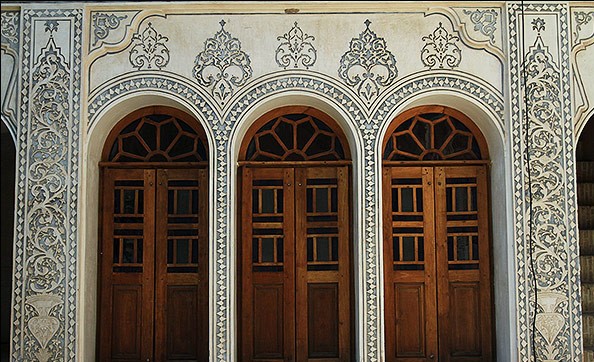 This unique building, near one of the city’s beautiful historic homes Boroujerdi’s house that belongs to the groom’s family that is interesting the story of this place also.
This unique building, near one of the city’s beautiful historic homes Boroujerdi’s house that belongs to the groom’s family that is interesting the story of this place also.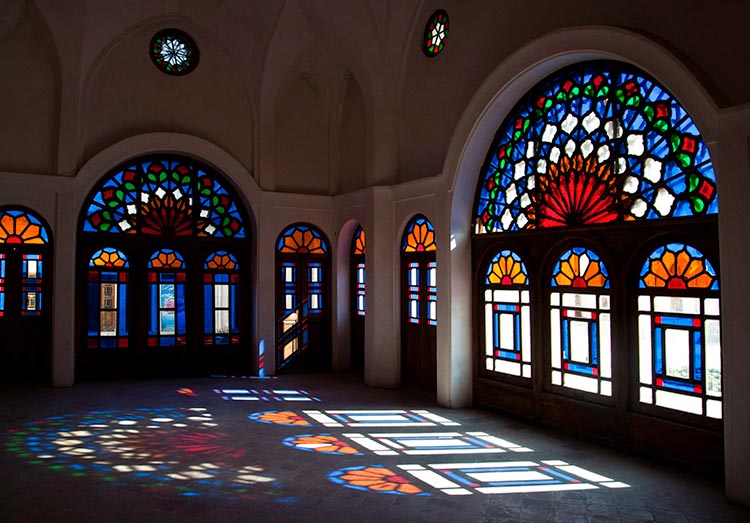
 Nasir ol molk Mosuqe that named in popular culture as the Pink Mosque,due to the usage of considerable pink color tiles for its interior design. The stained glass windows capture the morning light and create a glorious play of light on the floor of the mosque.this place is interesting place for all photographer.
Nasir ol molk Mosuqe that named in popular culture as the Pink Mosque,due to the usage of considerable pink color tiles for its interior design. The stained glass windows capture the morning light and create a glorious play of light on the floor of the mosque.this place is interesting place for all photographer. This Mosque is one one of the most elegant and photographed mosque in southern Iran.Built at the end of the 19th centery,its coloured tiling(on unusually deep shade of blue)is exquisite.
This Mosque is one one of the most elegant and photographed mosque in southern Iran.Built at the end of the 19th centery,its coloured tiling(on unusually deep shade of blue)is exquisite.
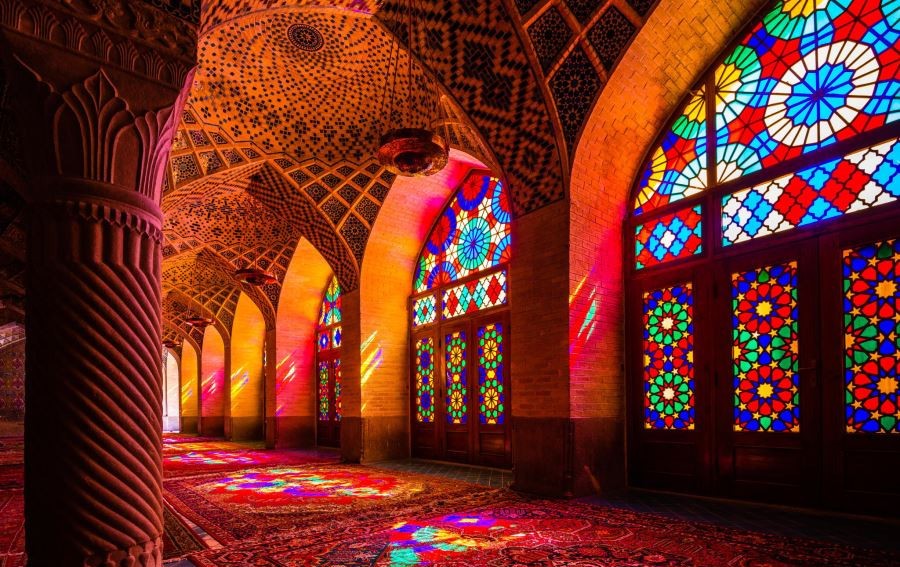
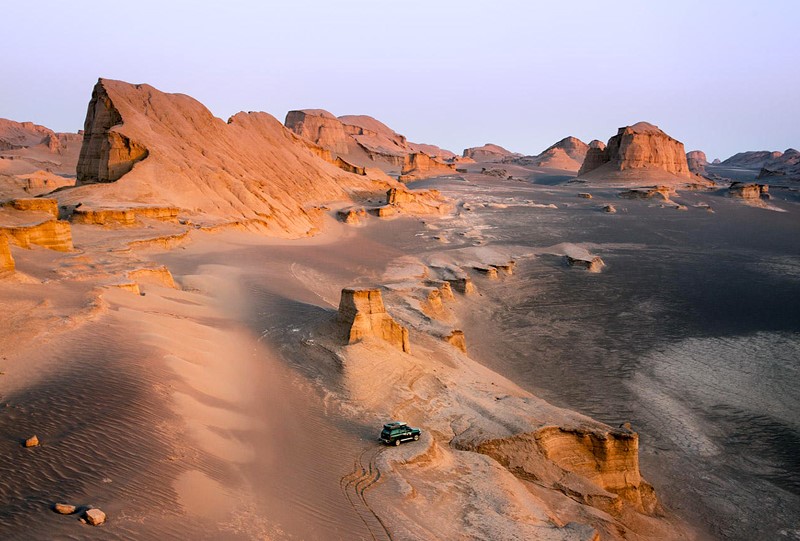 In the heart of the Lut desert, the only Iran UNESCO natural world heritage site, there is an area with incredible sight of Shahdad desert. Shahdad desert holds stunning and beautiful Kaluts. Kaluts are a group of oasis villages wedged in the desert and are made of ovate shape boiling of volcanic lava in the salty desert.
In the heart of the Lut desert, the only Iran UNESCO natural world heritage site, there is an area with incredible sight of Shahdad desert. Shahdad desert holds stunning and beautiful Kaluts. Kaluts are a group of oasis villages wedged in the desert and are made of ovate shape boiling of volcanic lava in the salty desert.


 Zand Complex: It includes Citadel,Bath,Mosque and traditional Bazaar,which is located in the center of Shiraz in Zand street among the oldest streets of Shiraz and near the most and best hotels of this city.
Zand Complex: It includes Citadel,Bath,Mosque and traditional Bazaar,which is located in the center of Shiraz in Zand street among the oldest streets of Shiraz and near the most and best hotels of this city.



 Nushabad Underground City, with one thousand and five hundred years’ record of homing and sheltering Families, is still stable!Close to Kashan City there is a mysterious underground city named Nooshabad or Ouyi! Nooshabad City concealing underground was built 1500 years ago, by order of Anushiruwān, Sassanid king. Three floors with strange Halls, food storages, water, Fat-burning lights and even toilets were constructed by hand digging of local people for long time residence of local people for protection against foes and invaders, but not for the normal life!
Nushabad Underground City, with one thousand and five hundred years’ record of homing and sheltering Families, is still stable!Close to Kashan City there is a mysterious underground city named Nooshabad or Ouyi! Nooshabad City concealing underground was built 1500 years ago, by order of Anushiruwān, Sassanid king. Three floors with strange Halls, food storages, water, Fat-burning lights and even toilets were constructed by hand digging of local people for long time residence of local people for protection against foes and invaders, but not for the normal life! They would use it only in threatening situations. They have got a really fabulous and unique city engineering and road designs into use to prevent simple crossing in the footpaths, so that the invaders and foreign people and whoever was not familiar with this city constructions would lose easily its way, like a maze!Above some rooms in Anooshabad city is trapdoors with lids for emergency exits and enters. This city has two main enters, which one of them is hidden in a water store house.
They would use it only in threatening situations. They have got a really fabulous and unique city engineering and road designs into use to prevent simple crossing in the footpaths, so that the invaders and foreign people and whoever was not familiar with this city constructions would lose easily its way, like a maze!Above some rooms in Anooshabad city is trapdoors with lids for emergency exits and enters. This city has two main enters, which one of them is hidden in a water store house. Ouyi City is built under ancient part of Kashan City and is extended even under the present city site. Exploring this city was accidentally by someone who wanted to dig a well in the yard of his house.In the depth of 3 to 18 meters under the normal level of ground, to pass through Ouyi/Anooshabad one cannot simply go straight! The main road is like a U and in different depth level! This path design would prevent offensives. This Unusual city with its surprising road map is one of the Adventural Attractions In Iran.
Ouyi City is built under ancient part of Kashan City and is extended even under the present city site. Exploring this city was accidentally by someone who wanted to dig a well in the yard of his house.In the depth of 3 to 18 meters under the normal level of ground, to pass through Ouyi/Anooshabad one cannot simply go straight! The main road is like a U and in different depth level! This path design would prevent offensives. This Unusual city with its surprising road map is one of the Adventural Attractions In Iran.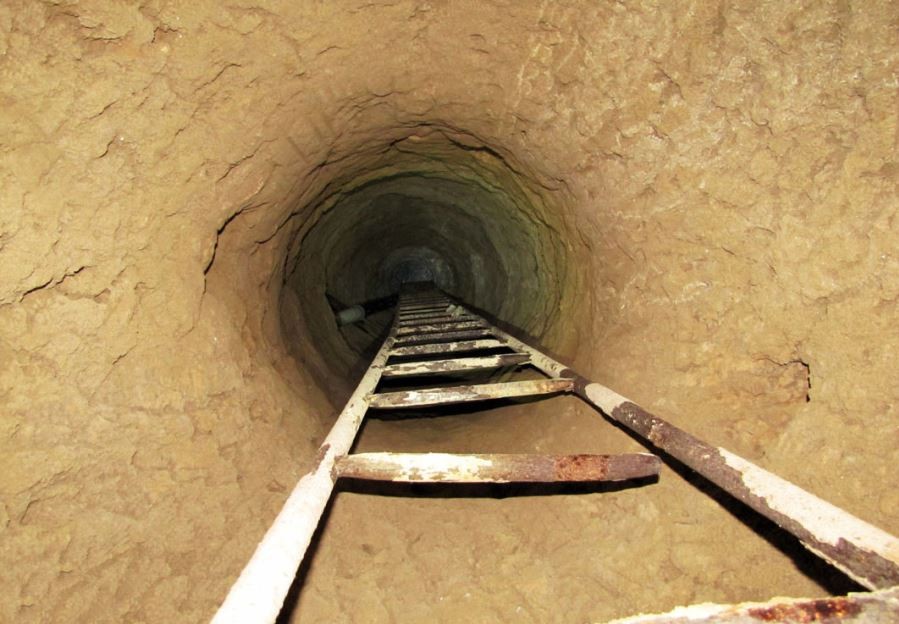
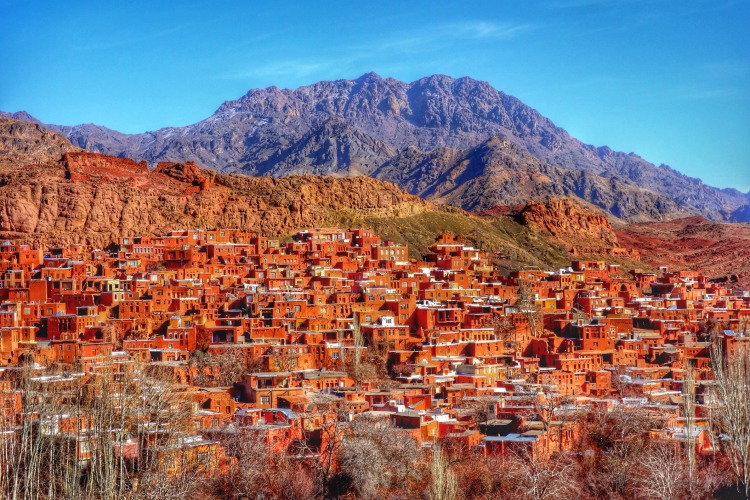 Forty kilometers far from Natanz, a city near to Isfahan, you will enter a village which its red stair house will attract your attention. The red view of these houses is because of the red soil that is utilized in their construction. It is a beautiful village in which people are still living the way they used to live 2500 years ago. It seems as if this part of world has been in a deep sleep and has never felt the passage of time. They have their own way of living.
Forty kilometers far from Natanz, a city near to Isfahan, you will enter a village which its red stair house will attract your attention. The red view of these houses is because of the red soil that is utilized in their construction. It is a beautiful village in which people are still living the way they used to live 2500 years ago. It seems as if this part of world has been in a deep sleep and has never felt the passage of time. They have their own way of living.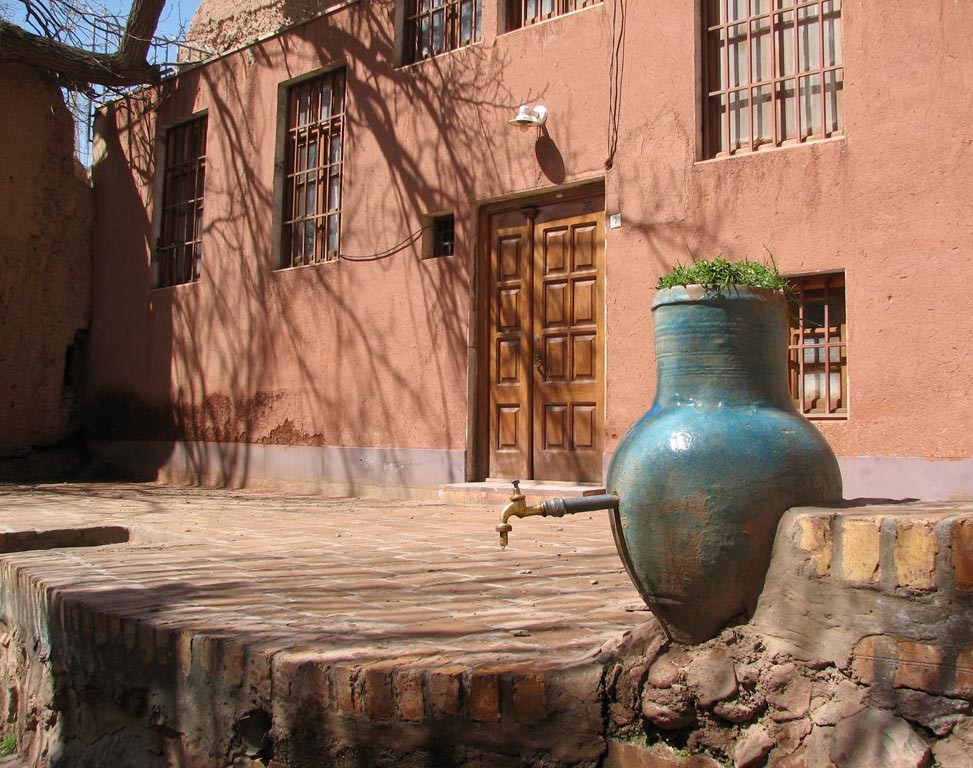


 The Church of Saint Stephanos located in East Azerbaijan was built in the 9th century and is among a handful of magnificent churches in Iran. The Church's architectural style is a mixture of Urartan, Parthian, Greek, and Roman styles. With respect to the history of the construction of this building, which is considered one of the architectural masterpieces of north-western Iran, there are a number of differing views.
The Church of Saint Stephanos located in East Azerbaijan was built in the 9th century and is among a handful of magnificent churches in Iran. The Church's architectural style is a mixture of Urartan, Parthian, Greek, and Roman styles. With respect to the history of the construction of this building, which is considered one of the architectural masterpieces of north-western Iran, there are a number of differing views.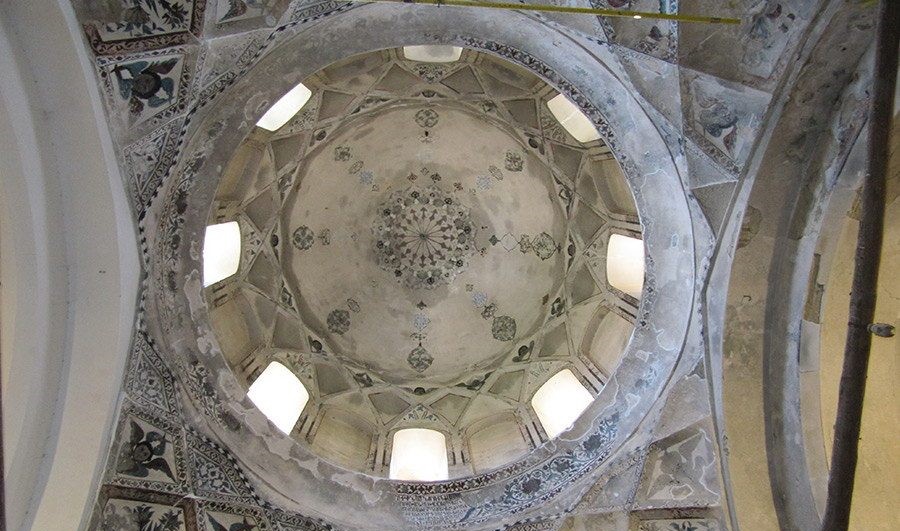 However, historic evidence, the type of construction, the building materials, the ornamentation, the philosophy behind the ornamentation, and the circumstances that allowed for the creation of this Church all attest to the fact that it was constructed during the tenth to twelfth centuries AD. The Church is located in the abandoned village of Dare Sham. Prior to 1971 it was accessible only by a dirt path, however, a road was constructed providing access by automobile.
However, historic evidence, the type of construction, the building materials, the ornamentation, the philosophy behind the ornamentation, and the circumstances that allowed for the creation of this Church all attest to the fact that it was constructed during the tenth to twelfth centuries AD. The Church is located in the abandoned village of Dare Sham. Prior to 1971 it was accessible only by a dirt path, however, a road was constructed providing access by automobile.
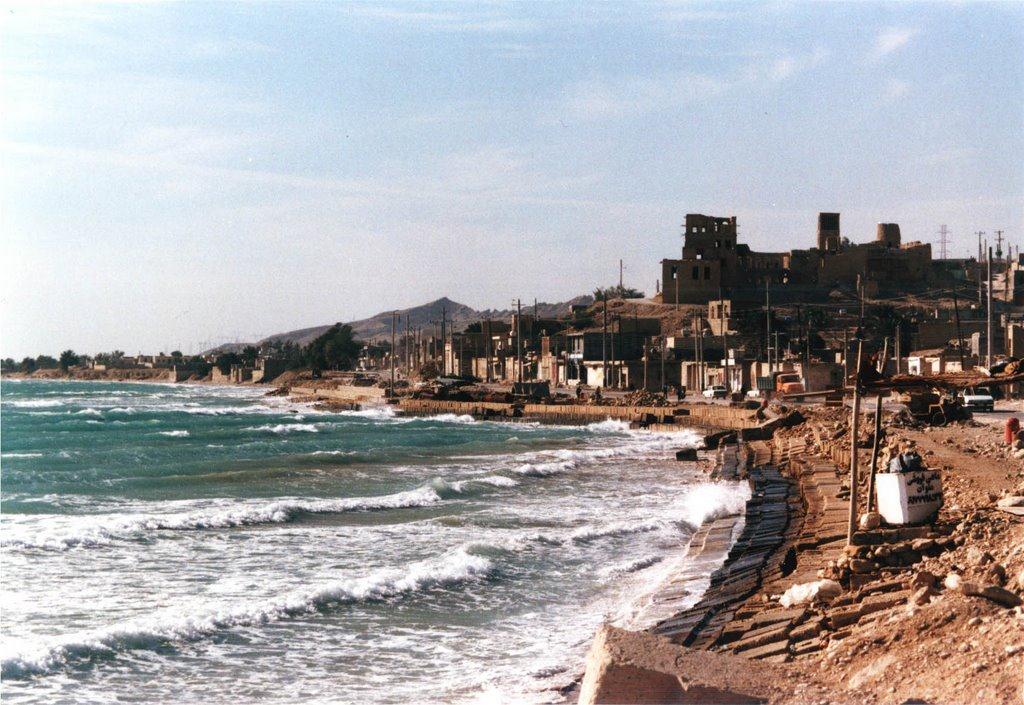 Siraf port, known today as Taheri Port, was a legendary ancient Sassanid port, with foundations dating back to the Parthian dynasty.
Siraf port, known today as Taheri Port, was a legendary ancient Sassanid port, with foundations dating back to the Parthian dynasty. 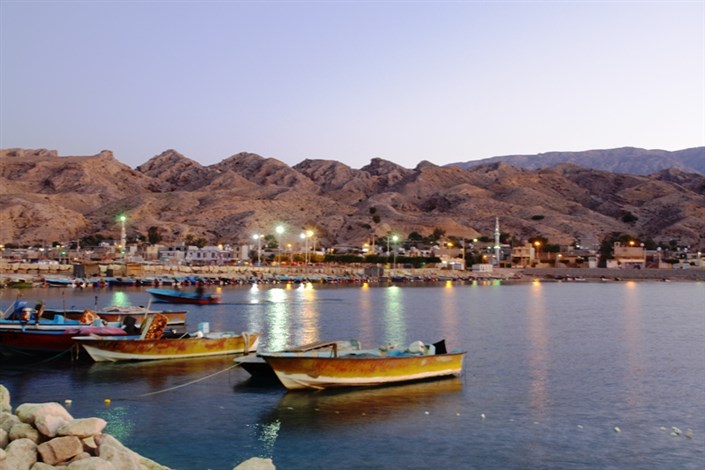 It was located on the north shore of the Persian Gulf in what is now the Iranian province of Bushehr and was destroyed around 970 AD. Its ruins are approximately 220 kilometers east of Bushehr and 380 kilometers west of Bandar Abbas.
It was located on the north shore of the Persian Gulf in what is now the Iranian province of Bushehr and was destroyed around 970 AD. Its ruins are approximately 220 kilometers east of Bushehr and 380 kilometers west of Bandar Abbas. Siraf controlled three ports: Taheri Port, Kangan Port and Dayer Port. Siraf was originally was known as Ardeshir Ab due to the fact that Ardeshir Babakan set up a waterway network here in order to facilitate port activities for which he was responsible. Siraf has not been yet registered on the list of national heritage sites of Iran. This is needed so that it will be preserved and maintained.
Siraf controlled three ports: Taheri Port, Kangan Port and Dayer Port. Siraf was originally was known as Ardeshir Ab due to the fact that Ardeshir Babakan set up a waterway network here in order to facilitate port activities for which he was responsible. Siraf has not been yet registered on the list of national heritage sites of Iran. This is needed so that it will be preserved and maintained.
 Khorheh is a village 12 miles north of Mahallat and 31 miles northwest of Delijan in Markazi Province alongside the main road running between Tehran and Isfahan. Its historical buildings are believed to be of the Parthian period, the most popular of its archaeological relics originally thought to be a temple. This site was first excavated by the Qajar King Nasereddiin Shah on a treasure hunt. It also has an inscription on a rock that dates back to Seljuq Empire.
Khorheh is a village 12 miles north of Mahallat and 31 miles northwest of Delijan in Markazi Province alongside the main road running between Tehran and Isfahan. Its historical buildings are believed to be of the Parthian period, the most popular of its archaeological relics originally thought to be a temple. This site was first excavated by the Qajar King Nasereddiin Shah on a treasure hunt. It also has an inscription on a rock that dates back to Seljuq Empire. Two columns of stone to the elevation of 6 meters remain from a vestige believed to be a temple. According to the studies and views of Hertsfold this was the temple of the 'God of War'. This structure overlooks the southern plain and the Khorheh River flows close to it. The ramparts and columns are the remnants of a large structure, most probably were constructed 23 centuries ago.
Two columns of stone to the elevation of 6 meters remain from a vestige believed to be a temple. According to the studies and views of Hertsfold this was the temple of the 'God of War'. This structure overlooks the southern plain and the Khorheh River flows close to it. The ramparts and columns are the remnants of a large structure, most probably were constructed 23 centuries ago. The results of excavations performed in this historical vicinity reveal that the original southern structure consisted of columns, chambers and a courtyard whereas the northern structure, which is the main one, consists of chambers and corridors. The western structure
The results of excavations performed in this historical vicinity reveal that the original southern structure consisted of columns, chambers and a courtyard whereas the northern structure, which is the main one, consists of chambers and corridors. The western structure 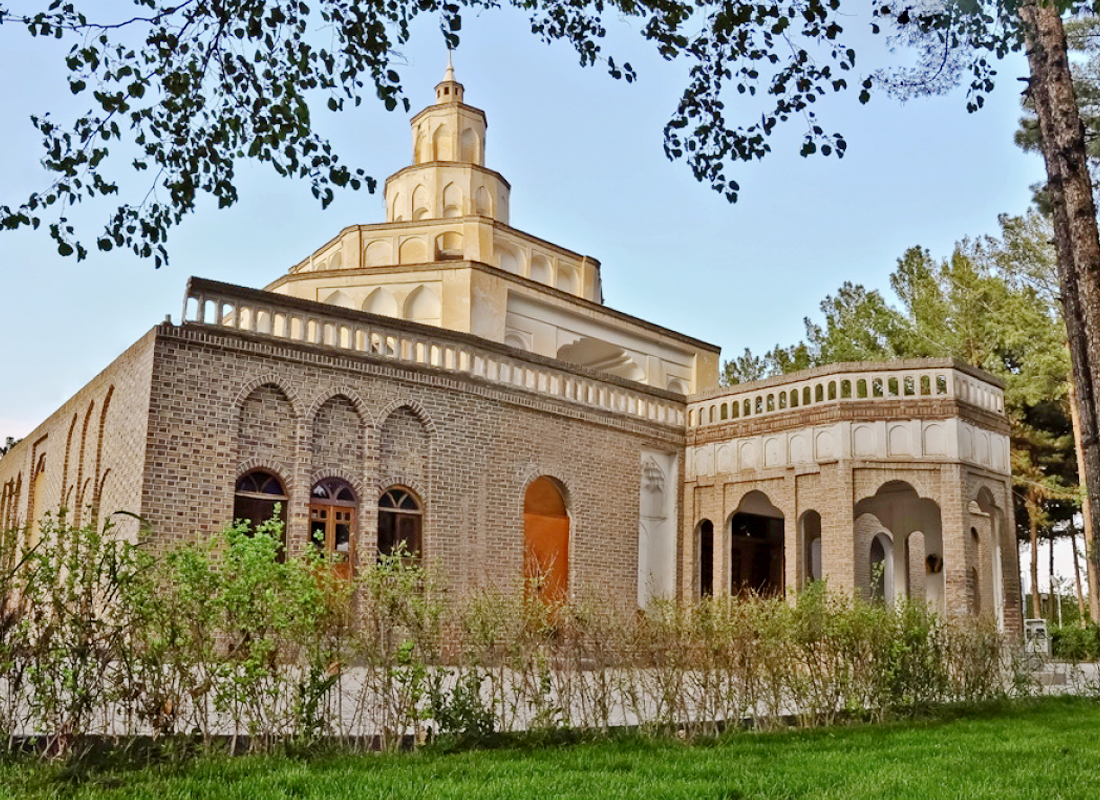 The Kolah Farangi
The Kolah Farangi 
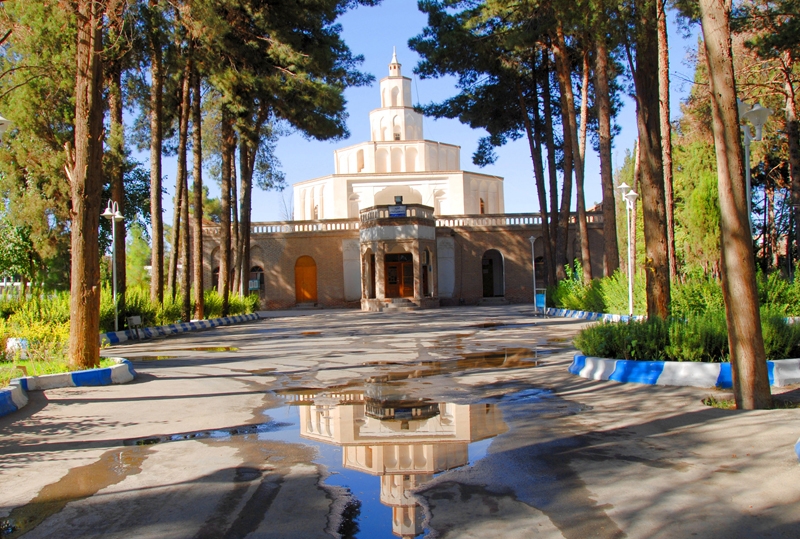
 Gerdab Sangi is located in Takhti Square in Khorramabad, Lorestan and is made of stones and plaster. It dates back to the Sassanid era (224-651 CE) and is a circular whirlpool built for the purpose of accurate and optimal distribution of water. Encircling several springs, the edifice sits near the prehistoric Qomri Cave. The construction was once used for rationing and distributing potable and
Gerdab Sangi is located in Takhti Square in Khorramabad, Lorestan and is made of stones and plaster. It dates back to the Sassanid era (224-651 CE) and is a circular whirlpool built for the purpose of accurate and optimal distribution of water. Encircling several springs, the edifice sits near the prehistoric Qomri Cave. The construction was once used for rationing and distributing potable and  There are a few different-sized outlets in the wall for controlling the flow of water into a canal on the west of the structure. While originally there were 7 of such outlets, however, today only one is functional. This outlet measures 160 x 90
There are a few different-sized outlets in the wall for controlling the flow of water into a canal on the west of the structure. While originally there were 7 of such outlets, however, today only one is functional. This outlet measures 160 x 90 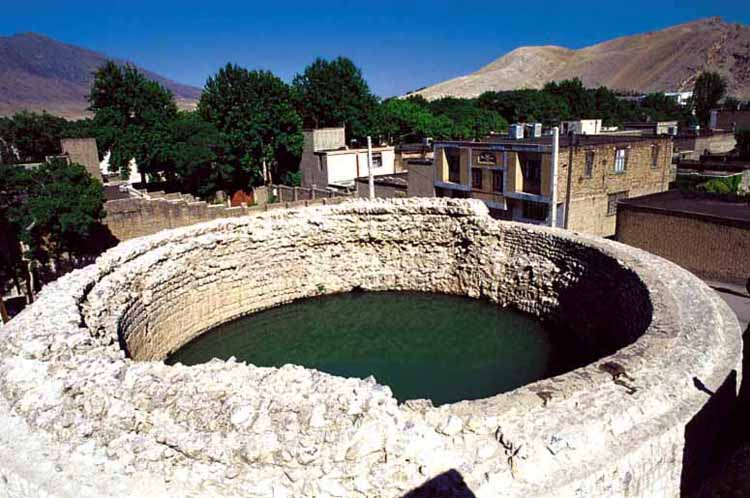
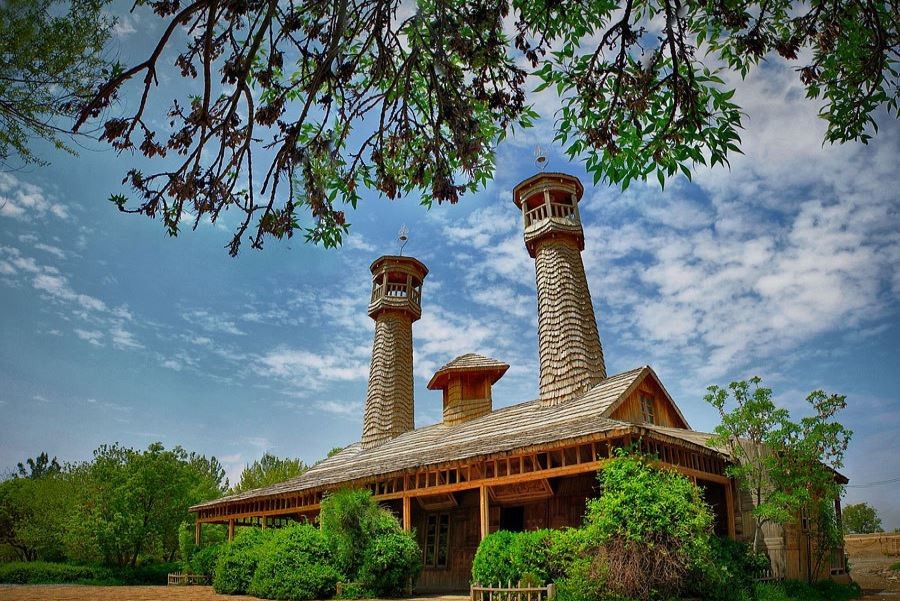 The Wooden Village is located in Neyshabur in Khorasan and is a unique attraction of the area engineered by Mr. Mojtahedi. The entire village has been made of wood and has used modern techniques in historical and cultural designs appropriate for the region. The village consists of a museum, library, restaurant, stores, bakery, mosque, gazebos and open green space.
The Wooden Village is located in Neyshabur in Khorasan and is a unique attraction of the area engineered by Mr. Mojtahedi. The entire village has been made of wood and has used modern techniques in historical and cultural designs appropriate for the region. The village consists of a museum, library, restaurant, stores, bakery, mosque, gazebos and open green space. A two storied wooden building sits
A two storied wooden building sits  The village has a total of 5 shops, all in the shape of a hexagon. While these shops have a wooden skeletal structure, their outside has been plastered with
The village has a total of 5 shops, all in the shape of a hexagon. While these shops have a wooden skeletal structure, their outside has been plastered with  The Folk Dance of the County of Southern Khorasan has a long history and is with rhythmic and dramatic movements. The province has a wide variety of dance and music. Rhythm beats contain 5, 3 and 2 in the region, having unique features and are not common in other parts of Iran, beautiful vocals, epic songs and dances are common in Quhistan and Birjand.
The Folk Dance of the County of Southern Khorasan has a long history and is with rhythmic and dramatic movements. The province has a wide variety of dance and music. Rhythm beats contain 5, 3 and 2 in the region, having unique features and are not common in other parts of Iran, beautiful vocals, epic songs and dances are common in Quhistan and Birjand. Folk instruments include the Timpani Drum - Serena – Circle usually made by the performers.
Folk instruments include the Timpani Drum - Serena – Circle usually made by the performers.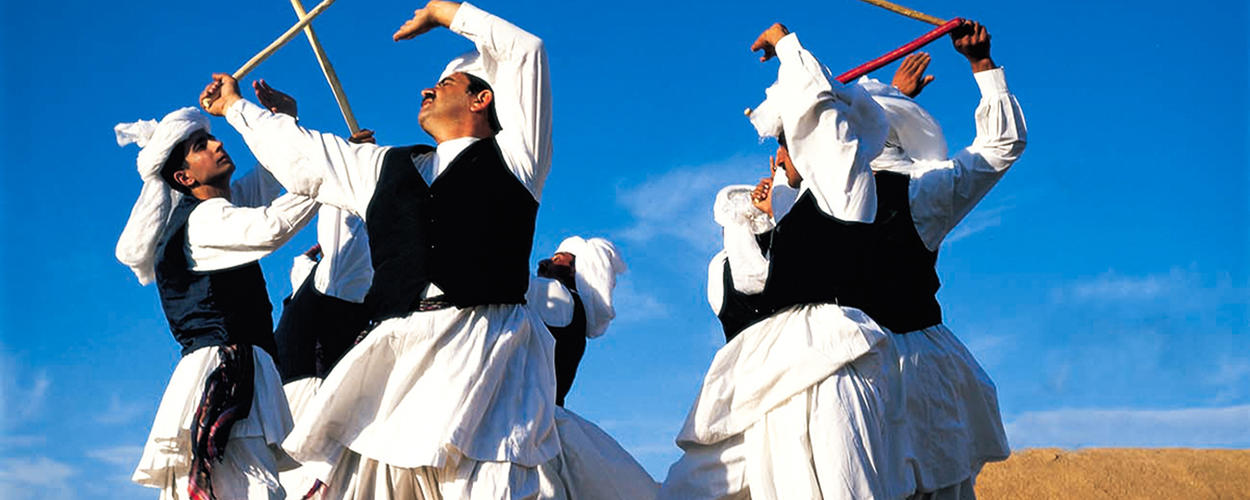
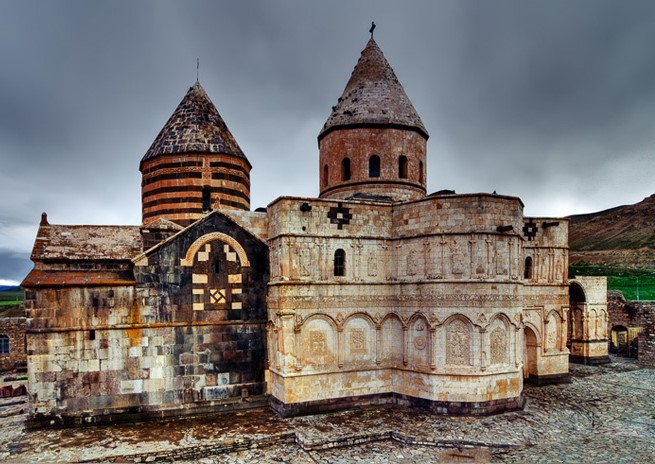 The St. Thaddeus Church best known as Qara Church and Tatavoos Church (which literally means Black church) is an ancient Armenian monastery perched on a mountain ridge in the northern Iranian province of West
The St. Thaddeus Church best known as Qara Church and Tatavoos Church (which literally means Black church) is an ancient Armenian monastery perched on a mountain ridge in the northern Iranian province of West  As one of the oldest and most notable surviving Christian monuments of Iran, Qara Church carries great significance for the country's Armenian Orthodox community. Armenians hold that Qara Kelisa is the world's first church and was constructed in 68 CE by one of the
As one of the oldest and most notable surviving Christian monuments of Iran, Qara Church carries great significance for the country's Armenian Orthodox community. Armenians hold that Qara Kelisa is the world's first church and was constructed in 68 CE by one of the 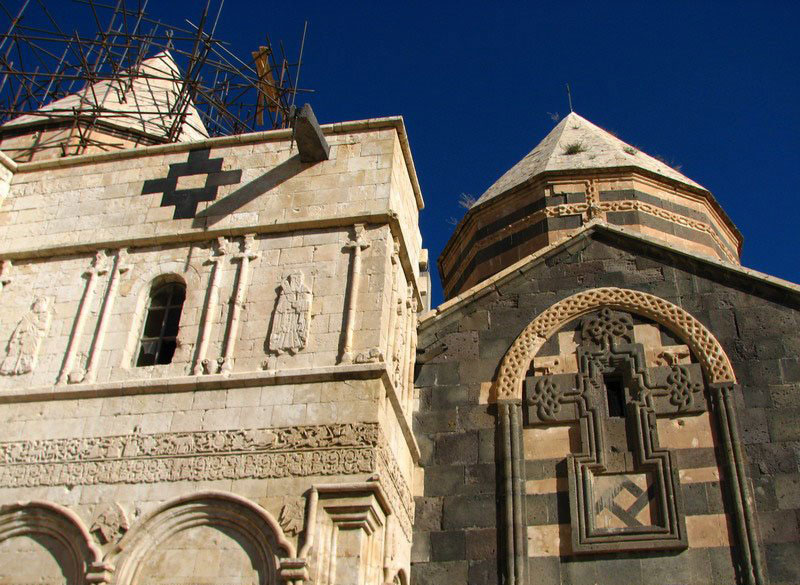 According to historical records of the Sassanid period, some of the Armenians were the followers of prophet Zoroaster, whereas some were sun worshipers. In the year 43 AD. two men by the names of Tatavoos and Batholemus preached on Christianity in the vicinity of Azerbaijan, thereby gaining a number of followers estimated at 3,500 people, including the daughter of the monarch of the time. In order to stop the
According to historical records of the Sassanid period, some of the Armenians were the followers of prophet Zoroaster, whereas some were sun worshipers. In the year 43 AD. two men by the names of Tatavoos and Batholemus preached on Christianity in the vicinity of Azerbaijan, thereby gaining a number of followers estimated at 3,500 people, including the daughter of the monarch of the time. In order to stop the 
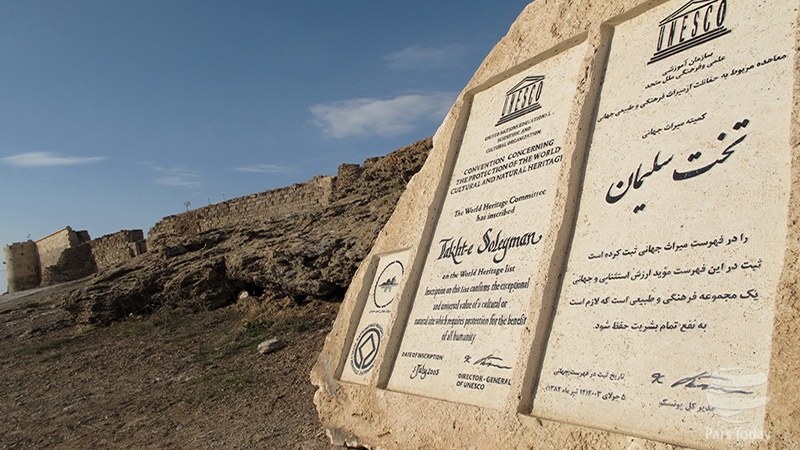 Takht’e Soleiman is an
Takht’e Soleiman is an  Takht’e Soleiman consisted of a fire temple called Azargoshasb in the Sassanid era when the temple was at its
Takht’e Soleiman consisted of a fire temple called Azargoshasb in the Sassanid era when the temple was at its 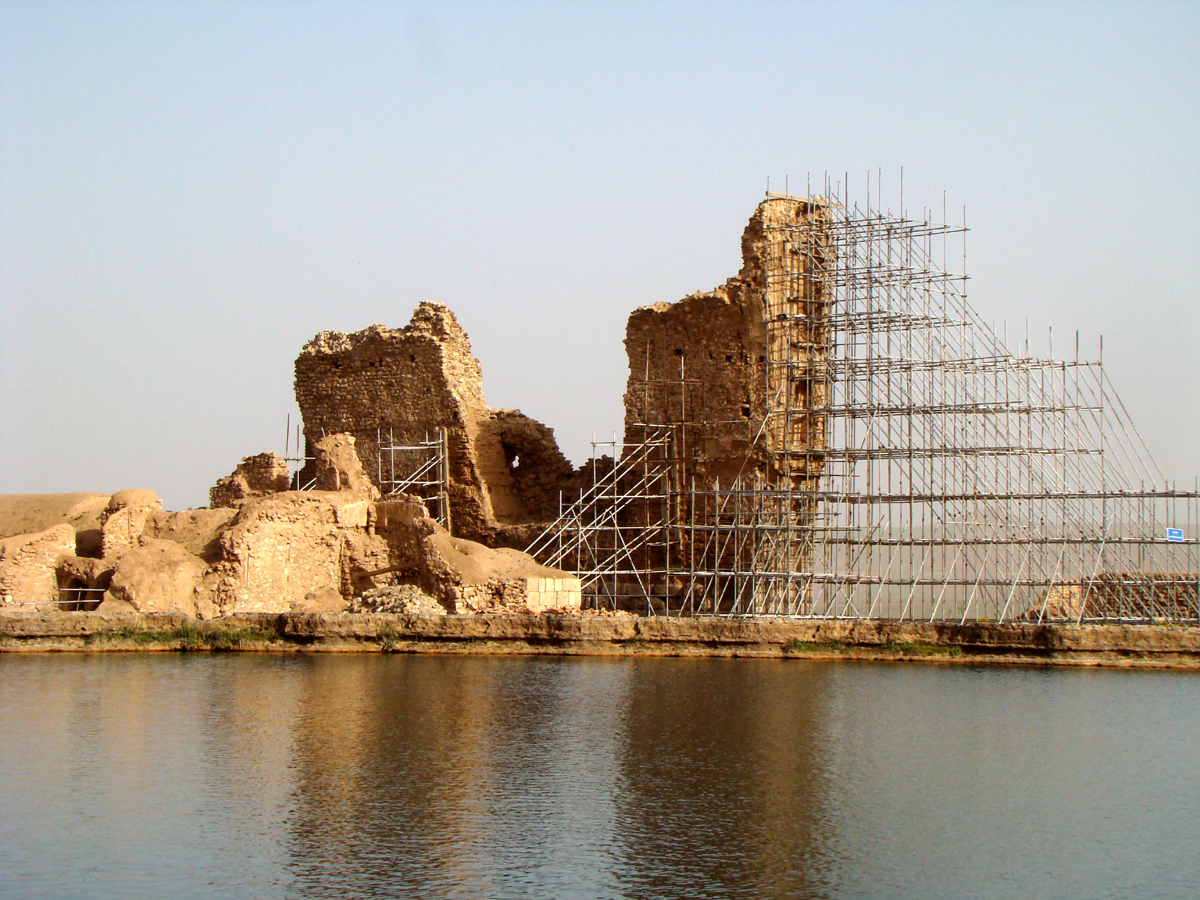 Folk legend relates that King Solomon used to imprison monsters inside the
Folk legend relates that King Solomon used to imprison monsters inside the 
 Mazichal is a scenic village with pleasant weather and verdant landscape 20 kilometers southeast of Kelardasht in Mazandaran. The small village lacks modern facilities such as electricity, tap water,
Mazichal is a scenic village with pleasant weather and verdant landscape 20 kilometers southeast of Kelardasht in Mazandaran. The small village lacks modern facilities such as electricity, tap water,  Mazichal gets its name due to the vast number of chestnut trees it contains. In local
Mazichal gets its name due to the vast number of chestnut trees it contains. In local 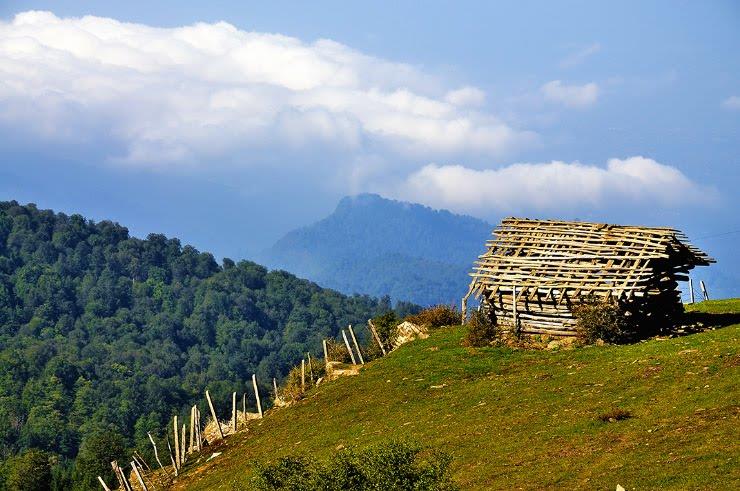 The Village attracts many ecotourists every year. Within the course of a day, the weather can change drastically from sunny to a downpour. The unique characteristic of this Village is that when it rains, Mazichal seems to be floating above the clouds. The topography of the region and the presence of hills and mountains is such that during raining periods clouds will overtake the sky and ground as well, covering the Village and its surrounding area. While constantly morphing into
The Village attracts many ecotourists every year. Within the course of a day, the weather can change drastically from sunny to a downpour. The unique characteristic of this Village is that when it rains, Mazichal seems to be floating above the clouds. The topography of the region and the presence of hills and mountains is such that during raining periods clouds will overtake the sky and ground as well, covering the Village and its surrounding area. While constantly morphing into 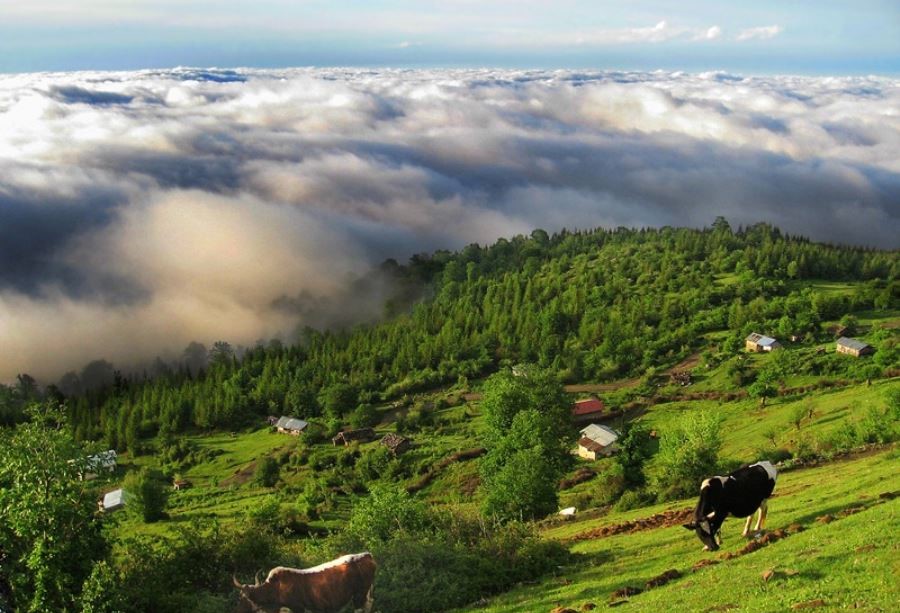
 Hi dear friends. I am NAVID TAHMASEBI (English instructor & Inbound manager of Tavrizh parvaz travel & tourism agency)and I was Born in Tabriz. This weblog is created to introduce IRAN for passengers from all around the World.
Hi dear friends. I am NAVID TAHMASEBI (English instructor & Inbound manager of Tavrizh parvaz travel & tourism agency)and I was Born in Tabriz. This weblog is created to introduce IRAN for passengers from all around the World.